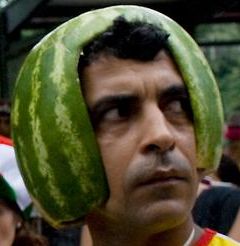Fehlender pull-down Widerstand im Gerät, welcher bei A zu C legacy Kabel nicht notwendig ist: https://hackaday.com/2023/01/04/all-about-usb-c-resistors-and-emarkers/
Danke, hab mich gerade gefragt wie das überhaupt möglich sein soll.
Das Gerät mit der Buchse ist der dümmste Mensch der Welt? Dann will ich zum Ausgleich einen Preis als intelligentester Toaster!
lies genauer
So ein Teil habe ich auch. Eine Taschenlampe mit USB-C Ladebuchse. Hatte in letzten Urlaub nur ein USB-C Kabel dabei und das Ding ließ sich nicht damit laden. Mit USB-A auf C geht es problemlos. Ich erinnere mich noch an die Zeiten, als USB einfach war.
Erklär mal, das ergibt keinen Sinn
Vielleicht ist das im Kommentar von @petl@feddit.org die Ursache: https://feddit.org/comment/2637724
Ich hab mal gelesen, dass auch bei DIY-Projekten ein Problem ist, so z.B. bei diesem hier https://www.printables.com/model/749967-wordclock-16x8-2024?lang=de
- Q: “Why is it not possible to use a USB-C power supply directly?”
- A: The honest answer is, that it was planned to be used with a USB-C power supply directly, but it simply does not work. Most USB-C power supplies “communicate” with the plugged in device and then turn their power on. This is not possible with the WordClock. So this is why a USB-A power supply with a USB-A-to-USB-C cable is required. You will find 2 very good ones in the parts list.
- A: There is an advantage to this anyway. Because such USB-A-to-USB-C cables seem to have a better standard, they work much better than the previously used Micro-USB cables.
Ja ok, das ist schwierig
Das ist ja noch viel schlimmer als die hunderttausend USB-C Kabel mit unterschiedlichen Spezifikationen.
Da hab ich die Tage einen Tester gefunden: https://ble.caberqu.com
ist nicht das c Ladegerät der dumme wenn es kein a über c kann?
Nein. Die Sache ist, bei USB-A Ports kommt einfach immer Strom, bei USB-C Ports (inklusive auf Netzteile) muss gewartet werden bis die andere Seite danach “fragt”, indem ein Widerstand zwischen 2 Leitungspaaren anliegt. Das ist notwendig, denn bei USB Typ C können auf beiden Seiten jede Art von Gerät hängen, und es soll verhindert werden, dass beide Seiten die andere gleichzeitig versuchen zu laden
Danke für die Erklärung.






